I’ve covered the Zangezur Corridor in southern Armenia with some regularity here. It’s a short 42-kilometer strip of land link in a trade and energy route that stretches the length of Eurasia, and there’s a reason it’s so hotly contested not just among regional actors like Armenia, Azerbaijan, Turkey and Iran, but also world powers like China, India, Russia, and the US.
The latter’s involvement can be viewed as an effort to control the flow of resources of the South Caucasus and Central Asia to Europe bypassing Russia and Iran and excluding Beijing. It would help cut off Russia’s access to the Middle East as well as one of the potential routes of China’s Middle Corridor.
That small piece of land is representative of a much larger geo-economic competition underway over control of infrastructure and the $9 trillion logistics industry, or as Michael Hudson argues, today’s New Cold War is a battle between finance capitalism (the Collective West) who want to privatize and financialize and the industrial capitalism of the likes of China.
The logistics great game also plays out in the mostly failed efforts to isolate Russia. The US has found success getting Europe to partially cut itself off from Russia, and sanctions have forced Moscow to largely overhaul its logistics for the country’s foreign trade, a mission at which it has largely been successful, but for the foreseeable future international transport corridors Russia relies on or is attempting to develop will occupy a central place in the minds of US neocons who look to create choke points as part of the New Cold War. One of those happens to be Zangezur, where at least for now the US finds success by burrowing its way into Armenia.
In other ways, this effort to isolate Russia is backfiring on Washington as it pushes Russia and China closer together joining them in the mission to wall off Eurasia from Western destabilization campaigns. It has forced Russia to pour as much resources as it can muster into development of its Far East regions. It drives Russia and India closer together, as well as Russia and ASEAN countries.
I’ve lost count of the number of trade corridor plans across Eurasia, but I’d like to do a 30,000-foot view here, and maybe dive more into specific cases in future posts. I’ll start with a look at the US-backed India-Middle East-EU Economic Corridor (IMEEC) and a few of its competitors supported by Russia and Iran and then turn to a brief look at one component of China’s Belt and Road Initiative that will likely be in the news more coming up soon.
IMEEC
The US is on its umpteenth plan to rival China’s Belt and Road Initiative. The India-Middle East-EU Economic Corridor (IMEEC) that was launched with fanfare at the G20 hosted by India in September 2023 is the latest iteration. Not even a month later, it went up in flames with the Middle East — maybe.
The initiative, which involves countries like France, Germany, India, Israel, Italy, Saudi Arabia, the UAE, and the US, hinged on normalization between Saudi Arabia and Israel. That has been put on hold indefinitely, and with the US-Israel rampage throughout the Middle East, the future prospects of IMEEC look shaky.
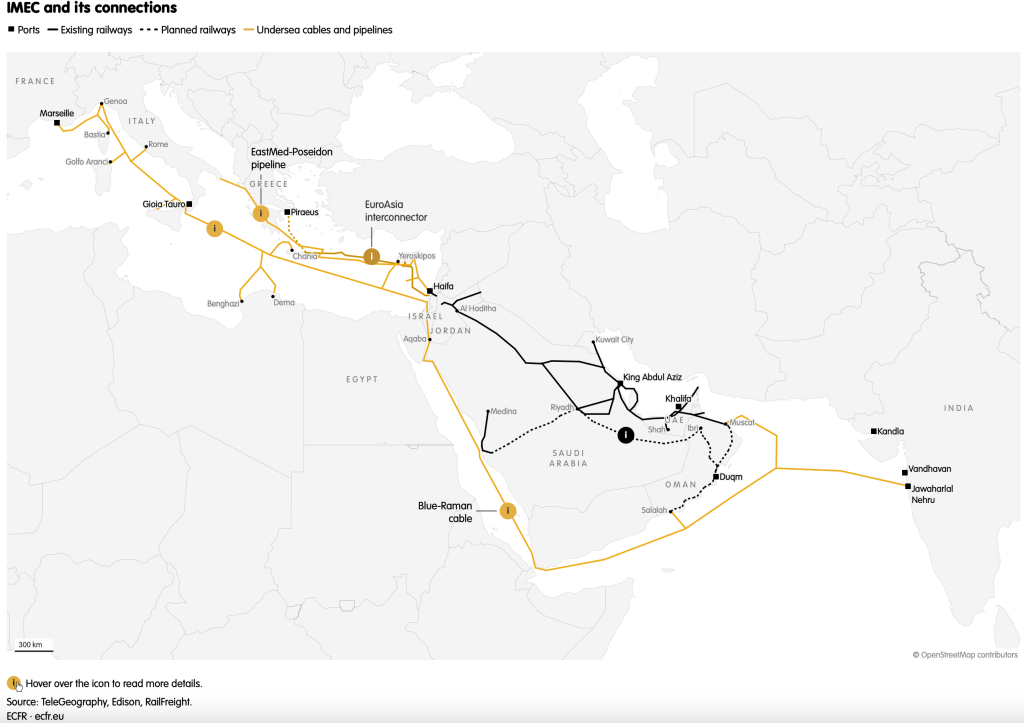
There are arguments that Hamas’ October 7 attack was part of an attempt by the Axis of Resistance to throw a wrench in the IMEEC plans. But then one must also consider the explanation that the attack was at least allowed to happen over the most heavily guarded border in the world in order to allow the US-Israel to enact the ongoing genocide and land grabs that reenvisions the region as part of IMEEC. Either might be too neat of explanations on their own, but the way Zionists are proceeding certainly has a fantasy component for the future of their potential conquests.
On Monday, the Israeli settler organization Nachala and members of Israeli Prime Minister Benjamin Netanyahu’s Likud party held a conference “Preparing to Resettle Gaza” in southern Israel. Two short months after the launch of Israel’s genocidal response to Oct. 7, the Netanyahu government was already internally circulating its future vision for Gaza.
The Jerusalem Post revealed those plans back in May. Known as “Gaza 2035,” they envision the strip remaining under long-term Israeli control with the goal to “rebuild from nothing.” Here’s how that apparently looks:
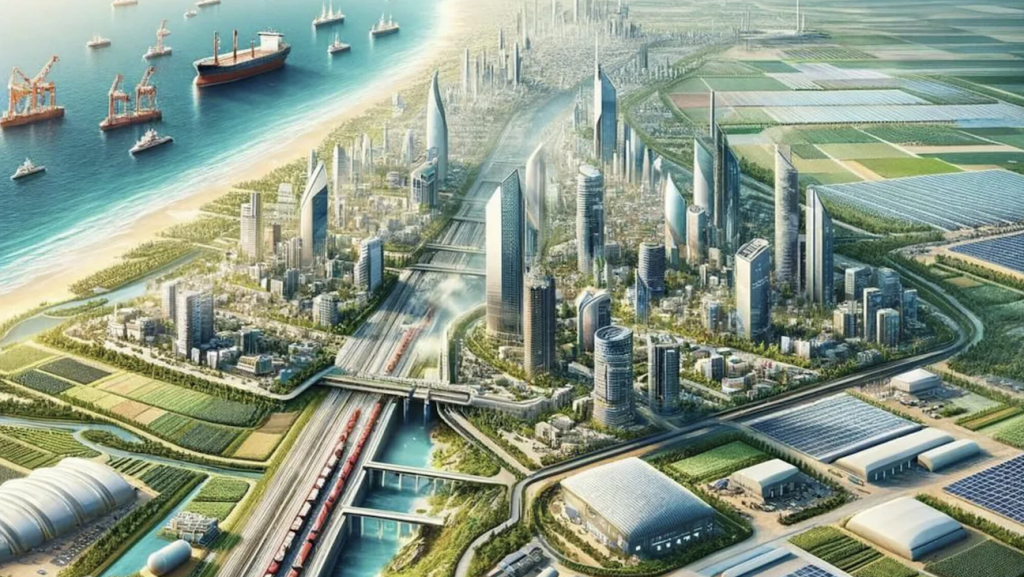
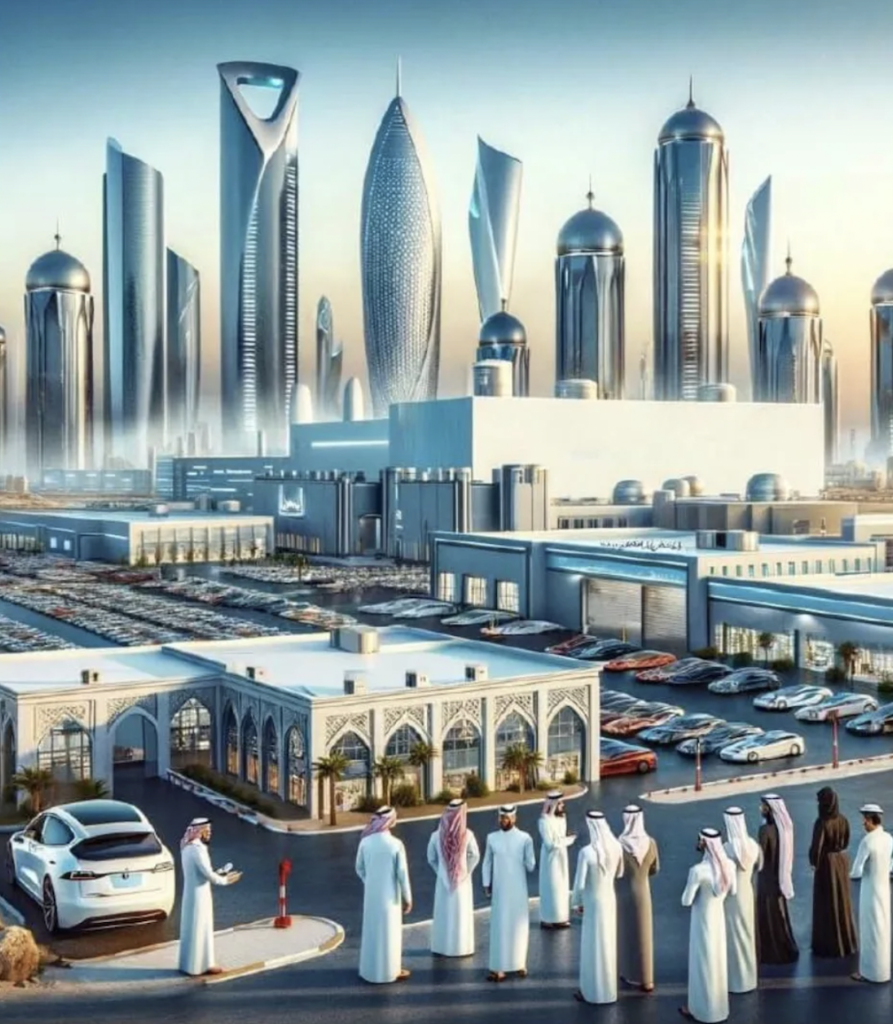
And here it is in the wider region as an “industrial production center” with access to “energy and raw materials from the Gulf while leveraging Israeli technology” and a key segment in IMEEC.
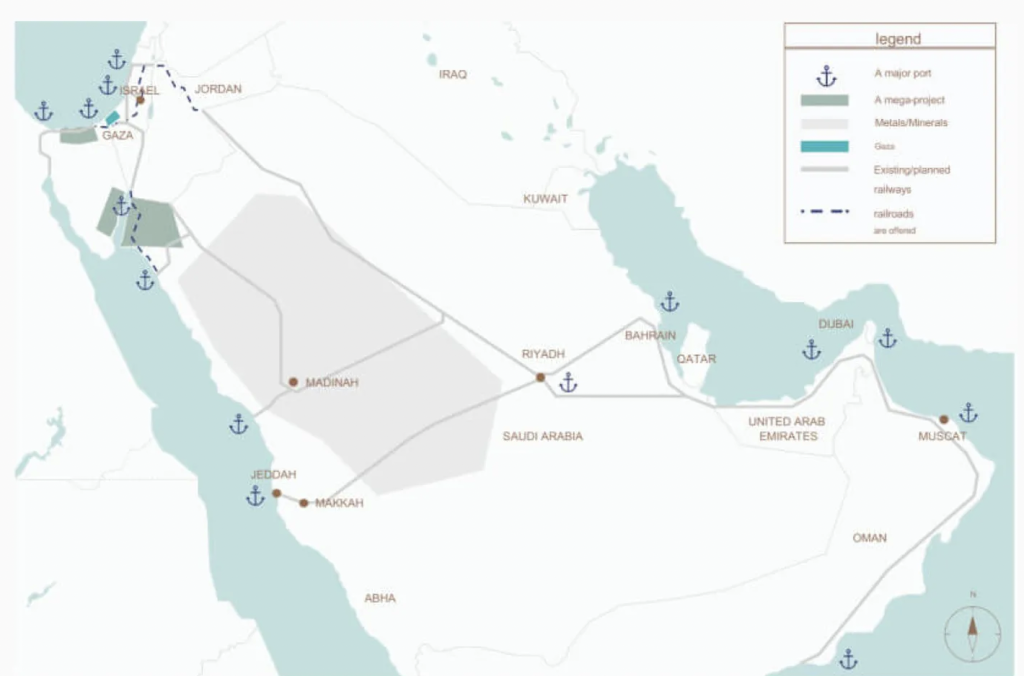
As ArtReview points out:
Before 8 October 2023, Gaza was already a modern, bustling city. It had a similar average density to London, a 97 percent literacy rate, 36 hospitals, 12 universities, parks, highrises, recreational beaches. If the goal is to ‘rebuild from nothing’, then it will be because Israel has razed the territory’s cities, towns and villages. The question is, who will it be rebuilt for?
…throughout the three ‘phases’ explained in the document, it becomes clear that the Palestinians permitted to live among the ruins of their homeland would provide cheap labour in this new ‘regional trade and energy hub’ intended for Israeli business interests.
Displacing a population and destroying their existing social, architectural and economic fabric under the guise of modernisation harks back to colonial ideas about certain races and societies being apparently unfit or incapable of extracting the maximum profit from land – an argument favoured by nineteenth-century colonisers from South Africa to North America. Three hundred years of this thinking has landed us in our grotesquely unequal present, yet former colonial powers in Europe and settler colonies like the US continue to finance the militarisation of Israel.
That’s likely why Europe and the US continue to finance Israel. There’s a long history of grand plans to remake the region and use Palestinians as disposable labor. As Laura Robson, a professor of history at Penn State University, describes in her 2023 book “Human Capital: A History of Putting Refugees to Work” the Palestinian refugee has always meant being in perpetual limbo pending a political settlement and being eligible for material aid but not legal assistance, asylum, or political advocacy. This meant keeping Palestinians confined to Arab host states and making them prime candidates for regional refugee labor — although efforts to deploy Palestinians as laborers in American-backed projects across the Middle East largely failed, not least because they agitated for more labor and political rights.
According to The Jerusalem Post, the Israeli government believes this vision for Gaza could be duplicated in the Axis of Resistance countries of Yemen, Syria, and Lebanon. Those countries will obviously have something to say about that. They’re also part of the competing world powers different visions for how to include the region in logistics corridors.
Prior to the unveiling of IMEEC plans, there were already similar projects to underway in the Middle East led by Russia, Iran, and China, such as the International North-South Transport Corridor (INSTC), which like IMEEC also involves India.
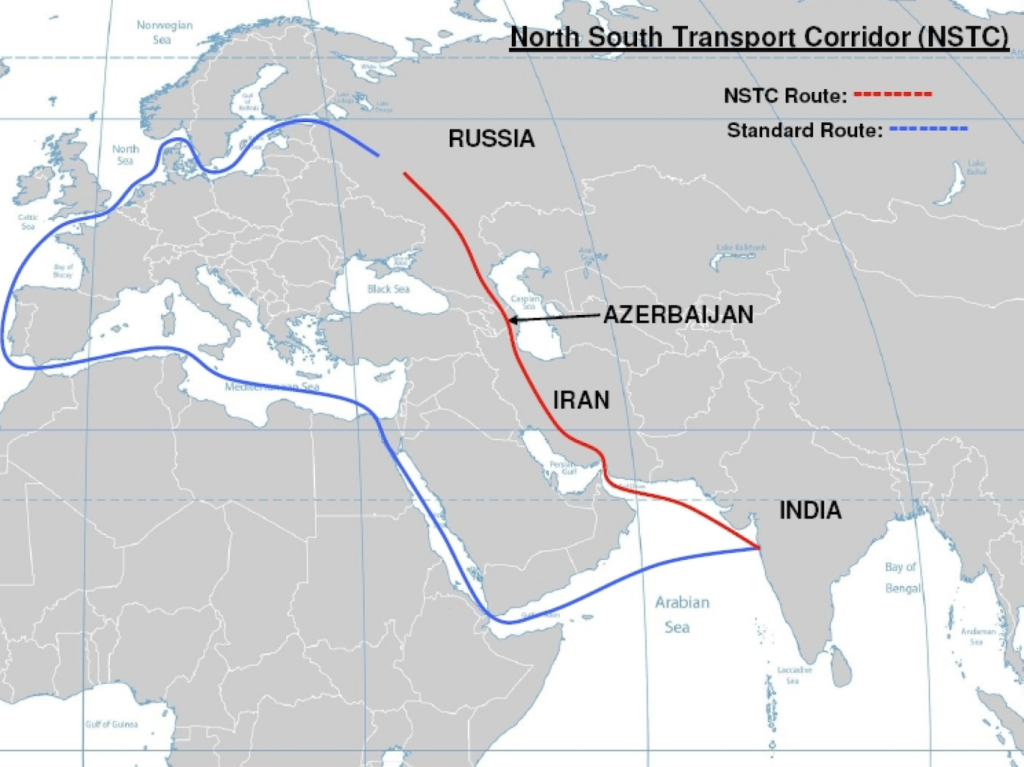
The INSTC faces several challenges, including infrastructure in Iran, sanctions, the West trying to create chokepoints in the Caucasus and Central Asia, and relentless pressure on New Delhi from the Five Eyes.
In August India approved a $9 billion public-private-partnership proposal to build an enormous port on its West coast at Vadhavan. New Delhi and private investors are hoping that IMEEC and/or the INSTC will come through to make the investment pay off.
There’s also the project to connect Bandar Imam Khomeini Port with Syria’s Latakia Port:
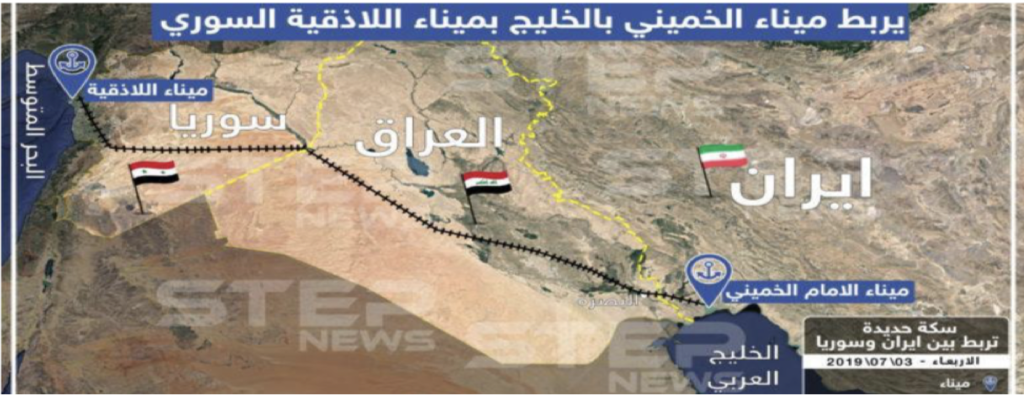
Some background from The Lebanese Broadcasting Corporation International:
Stretching 32 km and crossing the Iran-Iraq border, a new economic lifeline could potentially fuel Syrian ports. This is the Shalamcheh-Basra railway line.
The idea was first proposed in 2011 but was delayed due to the deteriorating security situation in Iraq with the rise of the terrorist group ISIS. The project resurfaced in 2023 when Iraq and Iran signed an agreement to expedite the construction of the railway, with both sides committing to complete the project within two years.
The Iranian president’s visit to Iraq on September 11 provided an additional boost, renewing high-level political support and commitments for the project’s completion. Discussions between the two sides helped resolve technical, financial, and border security issues, which may speed up the project’s progress…According to Al Jazeera, Iran places great importance on Iraq, viewing it as a vital link to Syria and Lebanon within the resistance axis. Iran also aims to connect the Shalamcheh-Basra railway to Syrian ports.
According to Arsharq Al-Awsat, establishing a railway link from Iran to the Mediterranean falls under the 25-year MoU between Iran and China signed in 2021, which includes hundreds of billions of Chinese investment in return for discounted oil. In July, Iran and China launched freight trains between the two countries via Kazakhstan and Turkmenistan.
As for IMEEC and Gaza 2035, even if the US-Israel were to somehow completely empty Gaza, Lebanon, and Syria of all human life so that their oligarchs have free rein to construct their capitalist utopias (dystopias for the majority), there will still be loads of other problems with IMEEC that need to be ironed out. It’s probably more likely the US and Israel settle for violent grifts rather than the ambitious IMEEC and attempt to stymie other China and Russia-backed corridors in the region. There’s only so long that can work, however, and there’s also the fact that the US-Israel barbarity in the Middle East is currently diverting trade from the region, and in the process is only encouraging other countries to seek alternative routes.
China’s Belt and Road and Georgia
Maybe nowhere is this logistics great game more evident than with China’s Belt and Road Initiative (BRI), which nowadays could be viewed as an effort to diversify its trade routes to ensure the country cannot be cut off from any needed imports by the West.

As China attempts to extend its reach, the US with the frequent help of the EU have rarely offered competing infrastructure projects, but instead attempt to sever China’s links through various, typically nefarious, means. BRI countries are often the targets of pressure campaigns or coup attempts by Western-backed forces, and Chinese loans to global south countries — while far from perfect, they’re still better than what the West has on offer — have been smeared for years in attempts to get recipient countries to refuse or back out of the deals. If all that fails, destabilization is often a tool that is turned to.
Let’s just focus on one country that has been in the news recently and will likely be there a lot soon as it has an election coming up this weekend that could be accompanied by color revolution attempts. That’s Georgia. Now why is the West so concerned about this Black Sea country of less than four million people seeking better ties with Moscow and Beijing to the point some pretty ugly allegations are flying around?
PM Kobakhidze posted an official statement saying that he was being routinely blackmailed by “high ranking foreign politicians,” but was “particularly aghast” during the phone conversation with an unnamed EU Commissioner, who “listed the range of measures that western politicians… pic.twitter.com/gtHgaSHhCr
— Civil.ge (@CivilGe) May 23, 2024
The problem for the US is that Georgia making nice with Russia goes against Washington’s Black Sea Strategy, but maybe even more than that is Georgia is an important piece of the puzzle for Chinese logistics on its Middle Corridor:

Azerbaijan and China signed a Joint Declaration on establishing a strategic partnership at this year’s Shanghai Cooperation Organization summit. The economic components of that agreement focused on cooperation in oil and gas production and transport infrastructure — i.e., continuing their pursuit of connectivity through the Middle Corridor, also known as the Trans-Caspian International Trade Route. Georgia’s turn away from the West, and the current government’s decision to repair ties with Russia and selection of a Chinese consortium to build its Anaklia port has Washington on its back foot — for now. We’ll see what happens with Georgia’s upcoming election and its aftermath.
What is the West’s ultimate goal? The fact that a Chinese consortium was selected to build Georgia’s deep sea port drew the ire of the West, but the Chinese consortium submitted the sole bid. There was a past effort to build it that involved the US. Here’s some background from RFE/RL:
A previous attempt to build the port in Anaklia by a consortium formed between Georgia’s TBC Bank and U.S.-based Conti International was canceled by the government in 2020 after years of political controversy that saw TBC co-founders Mamuka Khazaradze and Badri Japaridze facing money-laundering charges.
Following the charges, the American investor pulled out and the project ground to a halt until the government canceled the $2.5 billion port contract.
The fact is the West hardly builds stuff anymore — at least not competitively.
Have you ever heard of the Three Seas Initiative (3SI)? It wouldn’t be surprising if not.It was compared to the BRI when it first came about four years ago, and then mostly faded into obscurity. It’s described as “a politically inspired, commercially driven platform for improving connectivity between thirteen EU Member States allocated between Baltic, Adriatic and Black seas.”
The problem is it doesn’t really build anything. 3SI is led by the US, Germany, and the European Commission and has an investment fund advised by Amber Infrastructure Group, which promises “an attractive return to the investors.” The Three Seas Fund was created under Luxembourg law, which means it’s liable to a subscription tax of 0.01% of the fund’s net assets and is exempted from the payment of the capital gains tax, income tax, and wealth tax.
Started in 2019, 3SI has made a lot of investments and participated in some privatizations of public infrastructure but little actual infrastructure has been built. Involved parties continue to iron out “ultimate return on investment calculation.”
If we return to IMEEC, if it ever comes to fruition after a pause in all the killing, it’s still unclear who would actually lay the rail and pipelines and who would pay for it while ensuring they get a healthy return on the investment.
Plus Ca Change…
The same pieces of land that have been fought over for hundreds of years, remain points of contention today. France and Britain vied for the island of Perim in the Bab el Mandeb back in the 19th century. Today the US and others fail to prevent the Houthis from effectively closing the “Gate of Tears.”
The Armenians emerged victorious against the Turks and Soviets for Zangezur in 1920. The strip of land is now being contested again. The powers might change, but the logistics remain the same. And here we are again.
Today while the territory doesn’t fly a new flag when conquered, If we view it through the lens of neoliberalism and financialization of infrastructure, much of the fighting is over who gets to collect the rent.
Could the “rules-based international order” mean that the Russians can mine their resources, the Chinese can process them, and the Chinese can build it, but Western oligarchs must own it?
Of course the workers don’t own it anywhere, and as far as I can see that isn’t set to change in a more multipolar world. Readers can correct me if I’m wrong, but as the BRICS kick off their meeting in Kazan, the member countries still have some of the worst economic inequality in the world. Now, some argue that they’re still developing and working to make it better, but it sure is hard to see. In India, for example, income inequality is now worse than under British rule. According to the Gini Index score, the top four countries for wealth inequality are all BRICS members: South Africa, Brazil, the UAE, and Saudi Arabia (India is seventh), and across much of the BRICS, the problem is getting worse.
Are we just going to get more global oligarchs in China and Russia and some humbled in the US? Unfortunately for all of us, by the time they come to a truce and divvy up the pie, most of the logistics infrastructure might just be worthless anyways due to the ravages of climate change and the next pandemic(s).














